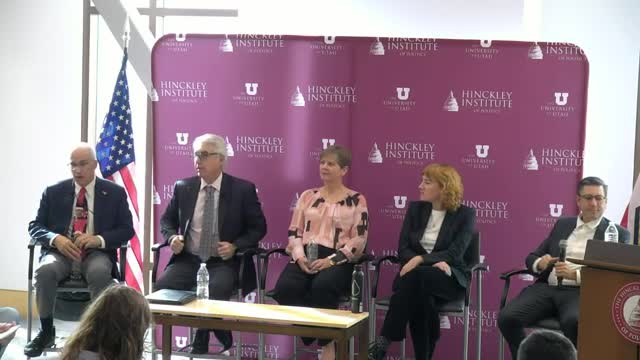Monticello plans golf course atop nuclear cleanup site
November 23, 2024 | Hinckley Institute of Politics, Citizen Journalism , 2024 -2025 Utah Citizen Journalism, Elections, Utah
This article was created by AI summarizing key points discussed. AI makes mistakes, so for full details and context, please refer to the video of the full meeting. Please report any errors so we can fix them. Report an error »

In a recent government meeting, officials discussed ongoing environmental cleanup efforts related to the legacy of nuclear weapons production, specifically focusing on a uranium mill tailings remediation site in Monticello, Utah. Approximately 50 miles south of Moab, this site has been the subject of a collaborative cleanup plan involving the city of Monticello, the state of Utah, the Environmental Protection Agency (EPA), and the Department of Energy.
The discussion highlighted a significant issue regarding a former yellowcake fabricator, where uranium ore was processed into yellowcake, a precursor to further uranium enrichment. Although the legacy plant was demolished and cleaned up in the 1980s, concerns remained about lingering radioactivity that could pose health risks to the community.
To address these concerns, the collaborative plan proposed covering the 140-acre site with four feet of topsoil, creating a protective barrier against the radionuclides still present in the area. However, the city of Monticello proposed an innovative alternative: transforming the site into a golf course. City officials argued that a golf course would not only provide a revenue-generating facility but also serve as a self-protecting measure against erosion, which is a significant concern in the region due to heavy rainfall.
The proposal received enthusiastic support from the meeting participants, who recognized the dual benefits of creating a recreational space while ensuring the safety and integrity of the site. As discussions continue, the collaboration aims to finalize plans that balance environmental safety with community development.
The discussion highlighted a significant issue regarding a former yellowcake fabricator, where uranium ore was processed into yellowcake, a precursor to further uranium enrichment. Although the legacy plant was demolished and cleaned up in the 1980s, concerns remained about lingering radioactivity that could pose health risks to the community.
To address these concerns, the collaborative plan proposed covering the 140-acre site with four feet of topsoil, creating a protective barrier against the radionuclides still present in the area. However, the city of Monticello proposed an innovative alternative: transforming the site into a golf course. City officials argued that a golf course would not only provide a revenue-generating facility but also serve as a self-protecting measure against erosion, which is a significant concern in the region due to heavy rainfall.
The proposal received enthusiastic support from the meeting participants, who recognized the dual benefits of creating a recreational space while ensuring the safety and integrity of the site. As discussions continue, the collaboration aims to finalize plans that balance environmental safety with community development.
View full meeting
This article is based on a recent meeting—watch the full video and explore the complete transcript for deeper insights into the discussion.
View full meeting

